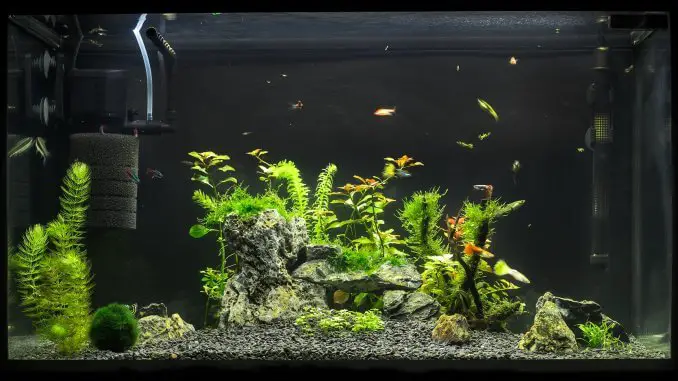
An aquarium needs to be kept clean. If the water becomes polluted, your fish will get sick.
Every aquarium needs some form of filtration. Having the best aquarium filter is the most common method of keeping your water clean.
These days finding the right filter is not easy as there are no one filter suits all. The perfect one for you will depend on a range of factors, such as tank size and flow rate.
There are different setups to suit different purposes, which can get confusing.
This article will explain the main types of filters and what you should know before buying one. We have also selected some of the best aquarium filters for you to choose from.
Comparison Table
| PRODUCT | FEATURES | LATEST PRICE |
|---|---|---|
1. Cascade CCF4UL Canister Filter |
| Check Price |
2. Uxcell Biochemical Sponge Filter |
| Check Price |
3. Fluval C Power Filter |
| Check Price |
4. Lee’s Undergravel Filter |
| Check Price |
5. VicTsing Water Pump |
| Check Price |
6. Eshopps Sump Filter |
| Check Price |
7. Marineland Magniflow Canister Filter |
| Check Price |
8. MarineLand Penguin 350 BIO-Wheel Power Filter |
| Check Price |
Aquarium Filters 101 (Overview)
The water in an aquarium needs to be cleaned – filters provide you with an easy way to do this.
Fish excrete a lot of waste as they swim. This needs to be removed before it decays. Excess food and other debris must be removed as well so the water quality in your aquarium doesn’t deteriorate.
Filters are a piece of equipment that run constantly, so it needs a power supply. There are many different types, each with their own pros and cons. Each type is suited to certain situations, so later in the article we will help you work out which one you will need.
There are three aspects to the filtration process: mechanical, biological and chemical.
- Mechanical filtration is where water is passed through a physical barrier to remove solids.
- Biological filtration is where nitrifying bacteria build up to convert harmful compounds such as ammonia and nitrites into less harmful compounds such as nitrates.
- Finally, chemical filtration uses media such as carbon to remove impurities.
Fundamentally each filter works the same way.
A motor draws in water to the filter. Here the water is filtered and then released back into the tank, much cleaner and healthier for your fish.
Never clean the filter with chemicals or tap water. This will kill the bacteria on the biological media, which most of the filtration depends on.
Best Aquarium Filters
Canister Filter
Canister filters are generally used for larger aquariums (above 40 gallons).
As the name suggests they are shaped like a canister and usually hold all the three types of filtration. These filters are very efficient and hold more media than other setups.
They are also very quiet, and you will hardly hear a thing when they are running.
However, canister filters can be quite expensive depending on the brand and can be difficult to set up.
Best Canister Aquarium Filter
Available in five different sizes, this powerful filtration system is one of the industry leading filters for freshwater and marine tanks.
Sponge Filter
Sponge filters are a very simple system. It consists of a sponge shaped cylinder that is fully submerged in the water.
The water is moved through the sponge by either an air stone or a water pump.
These setups are usually included in most starter kits as they can last for a long time if properly looked after.
Sponge filters come in many different sizes and shapes. However, keep in mind that usually their best use is as an addition to other filtration which your tank has.
Simple Aquarium Sponge Filter
Available as a one, three or six pack, this simple sponge filter will provide you with basic mechanical filtration and biological filtration.
HOB Filter (Power Filter)
An aquarium HOB filter is one of the most common types of filtration for small tanks.
They typically provide all three types of filtration and they work by drawing water up through the siphon tube, through the media, and back out again into the tank.
One of the many benefits of this product is that it is easy to access and maintain, they are also relatively cheap in comparison to other systems and the media can be changed within minutes.
The downside of this filter is that when the media is replaced, the colony of good bacteria is lost.
Best HOB Power Filter
Offering filtration needs for tanks from ten gallons to seventy gallons, this filter comes in three different sizes.
Undergravel Filter
Undergravel filters are very effective however they also have disadvantages.
They require regular cleaning and they are believed to slow down plants’ growth by oxidizing their nutrients.
Maintenance is more straightforward than a canister setups and should be carried out weekly for better performance. Some waste builds up on the top of the substrate which should be cleaned away by siphoning the detritus away.
On the plus side, undergravel filters have a vast surface area and can be an advantage for the growth of nitrifying bacteria.
Premium Undergravel Aquarium Filter
Quality undergravel filter for 40-55 gallon tank, providing all three stages of necessary filtration needs for a larger tank.
Filter Pump
Most filters come with a built in pump, but some will need a pump to power them. Depending on the volume of water, you can choose different pumps.
You should always consider gravity – this can be very helpful when setting up your system. Try to let the pump work with gravity and not against it.
Depending on the aquarium you want to set up, whether it is saltwater or freshwater, you should consider different pumps.
Pumps rated for saltwater aquariums can be used for freshwater tanks. However, the reverse might not be a good idea as saltwater is a lot more corrosive.
Submersible Aquarium Filter Pump
This pump can be attached to filters which need a pump to function. It has an adjustable flow rate.
Sump Filter
A sump is not actually a filter, but instead just a container for your filter and other equipment.
The main purpose of a sump is to keep water from overflowing onto the floor – they can also be used to house other equipment such as protein skimmers and the heater.
Traditionally, these setups are used for saltwater tanks because they are very reliable in maintaining good water quality – they are also very good for large tanks. If you are thinking of purchasing a large tank for a freshwater environment, these setups are among the best choices.
You can purchase a circulation pump to go inside the filter or purchase a full sump setup with the capacity to filter your water too.
Best Aquarium Sump Filter
These simple, quiet and affordable sumps are great for reef and saltwater enthusiasts looking for a sump.
Marineland Magniflow Canister Filter

This particular filter removes odors, discoloration, and impurities using black diamond carbon. You can purchase this filter in three different sizes as it is available for 30, 55, and 100-gallon tanks.
Marineland Penguin 350 BIO-Wheel Power Filter

The filter is appropriate for all fish and can be used in breeding tanks, fry tanks, and in the general population tank. If you have fish that produce a lot of waste, you want to purchase a bio-wheel power filter to quickly remove the toxic ammonia nitrite from the water.
Aquarium Filter Guide
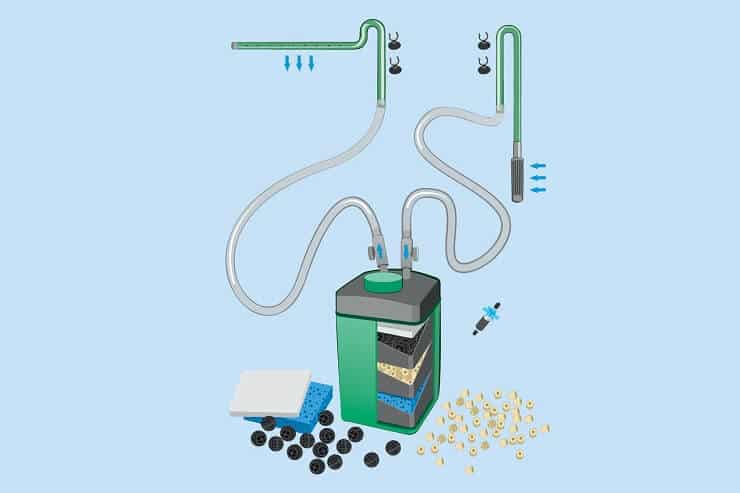
Do I Need A Filter?
You definitely need some form of biological filtration in every aquarium – a filter is the easiest (and most common) option.
They have multiple roles within an aquarium, but their main job is to clean the water. As water passes through, waste, debris and toxins (like ammonia) are removed, leaving cleaner water to be released back into the tank.
Your fish depend on this, otherwise it is easy for pollutants to quickly build up in the water. At low levels most pollutants are not harmful, but they can become toxic at higher levels.
The buildup happens because you are keeping your fish in a relatively small space with no flushing of the water. This is why smaller tanks are harder to maintain, because it is easier for toxins to accumulate.
The second thing a filter does is create a current. This can agitate the water’s surface which helps to introduce more oxygen to the water. This is even more important if you keep plants in your tank.
Finally a filter is to be a place for bacteria to grow. While some types of bacteria can cause disease, they store cultures of beneficial bacteria that break down harmful toxins into safer molecules.
Their main role is to carry out the nitrogen cycle. One type of bacteria breaks ammonia down to nitrites, and another type breaks nitrites down to nitrates, which are less toxic. Though nitrates are considered safe, they become toxic in high concentrations. It is your job to keep nitrate levels low by performing water changes.
This means you can’t just add a filter to your tank and assume everything will stay healthy. You need to clean the tank too.
Filter Types Explained
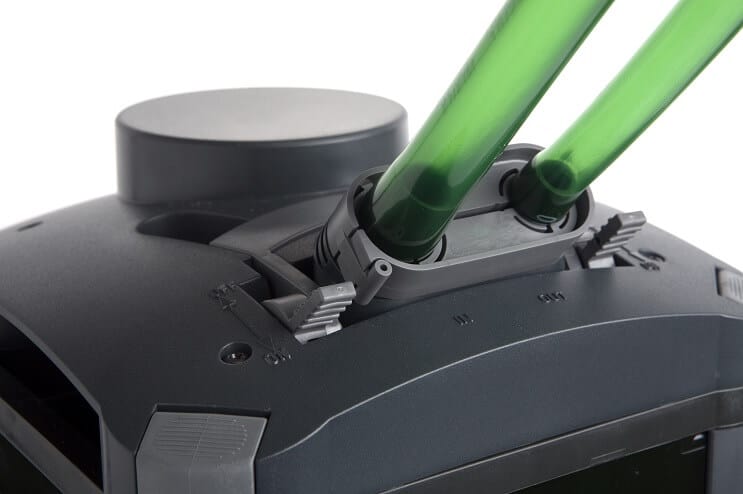
With so many products out there, it can be hard to figure out which one is best for you.
Understanding the pros and cons of each filter type (internal, canister, HOB and sponge) is very helpful when making the decision.
Canister filters are kept externally, so they are easier to access when cleaning. This might be a problem if you don’t have the space outside of your tank, especially since they are larger than other filters.
HOB filters make a good alternative. They are external too, but they are less bulky so can fit in a wider range of setups.
Their waterfall-like flow of water helps to oxygenate the water, but the crashing of water can get noisy. Some models will have an option to regulate the flow of water, which should solve this.
The benefit of having an internal filter is the space you save on the outside. They are less powerful due to their smaller size, therefore they don’t tend to be used in tanks larger than 50 gallons. They can be moved in and out of the tank easily, if positioned in an accessible area. Once out, they are easy to take apart and clean too.
If your tank is a bit cramped, you might notice that an internal filter takes up valuable space.
A sponge filter is often chosen because it provides a gentler filtration, which could be useful to protect fry.
There are lots of ways to power a sponge filter: air pumps, powerheads, and canisters are all options. This gives you plenty of control over your filtration setup.
The main drawback is having to clean the sponge. It is easy to do (just rinse it in extracted aquarium water) however, it needs to be done regularly.
How To Choose The Best Filter
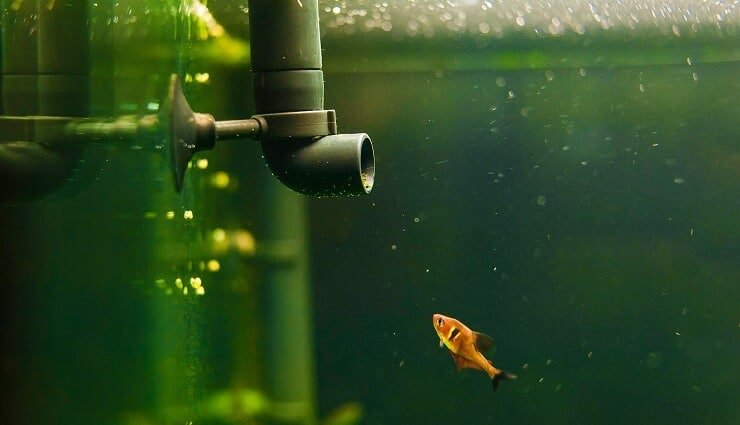
The size of your tank is the main determining factor for a filter.
Larger tanks need a more powerful system to process all the water. Powerful filters tend to be larger, which make external filters the best option.
The size of your room will influence the choice too. Small rooms might be best suited to internal filters because these sit inside the tank.
Size is not the only thing that influences your choice, think about the purpose of your aquarium. For example, breeding tanks are well suited to sponge filters because the fry can’t get drawn in through the inlet.
Another thing to consider is the fish in your tank. Some plants and animals prefer a strong current because that is what they would be used to in their natural habitat. You might want a filter with a stronger outflow of water to suit the needs of your inhabitants.
Tanks containing a greater biomass are harder for filters to deal with because more waste is produced. A filter that processes more gallons per hour will be more successful at dealing with the extra waste.
All filters need to be cleaned regularly to keep everything running efficiently. When picking a filter, find one that is easy to take apart so that cleaning is as easy as possible.
Summary
Best Canister Aquarium Filter
Available in five different sizes, this powerful filtration system is one of the industry-leading filters for freshwater and marine tanks.
With so many different aquarium filters, finding the perfect best aquarium filter can be difficult.
Luckily you have plenty of time to choose because it is a decision you make before setting up the tank. At this point, you will also be thinking about what other equipment you will need, like a heater.
Once you have decided what you are keeping in the aquarium and what tank size you will have, the range of filters gets narrowed down.
By researching your fish’s needs you will soon find a filter that suits them. You can then move on to the exciting parts of setting up the tank and adding fish.
Which type of filter do you use? Let us know about your setup in the comments section below…

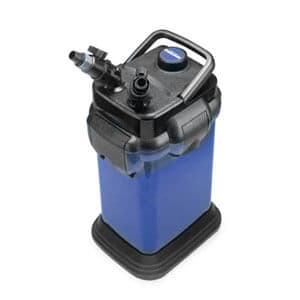

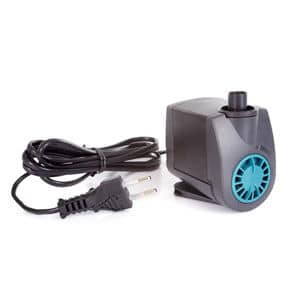
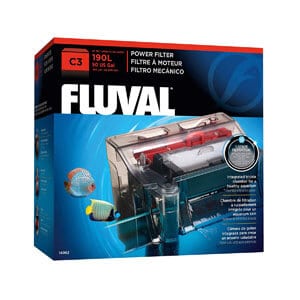
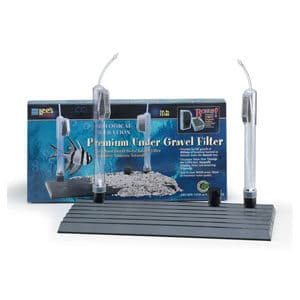
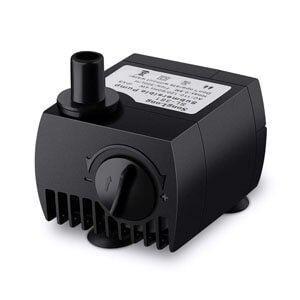
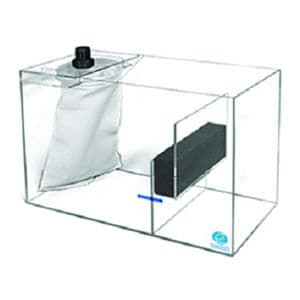
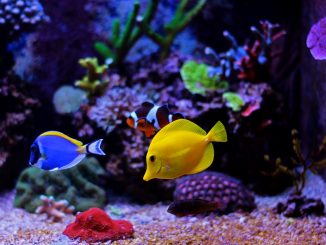
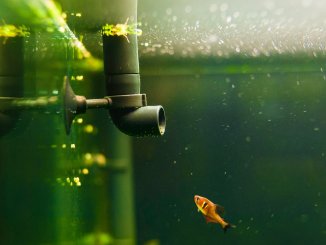
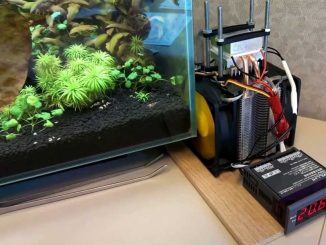
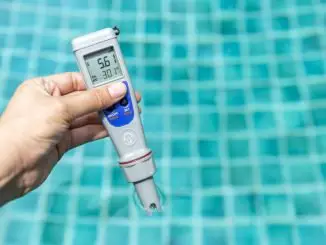
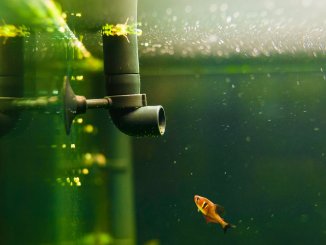
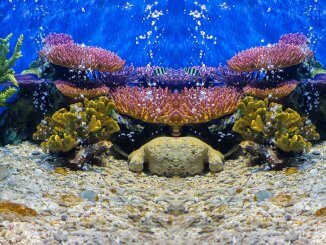
Hi, I’m a total beginner in the fish keeping world. I bought a secondhand 80 gallon tank (with cupboard and hood as seen in one of your previous emails). I didn’t know what type of filtration system it had until I saw a DIY video on under gravel jet systems. The one I have is made very simply with 3 PVC pipes going the length of my tank & a joining pipe going across each end with an outlet pipe on one corner. It has holes drilled in the PVC pipe. The outlet pipe is connected to a hose which goes down to a Jebo canister in the cupboard under the tank. The water circulates through the canister media and is returned to the tank via an inlet hose connected to a rain bar. The PVC pipe is covered with medium sized gravel. I’m sure I have the correct media in the canister. I cycled my tank, have only a few fish in it (2 gouramis & a few tetras), clean it weekly, (& lightly vacc), but still have to do a 50% water change due to 35ppm nitrates & 0.2ppm ammonia. I don’t overfeed. I add Quick Start (bacteria)when water changing. My water PH is naturally 7.4 but I add PH Down until it is 7.0. I have a heater & aerator but am still losing fish. I don’t want to buy anymore until I can work out what is going wrong. At the moment I don’t have live plants as that is yet another great learning process with CO2 canisters, lighting etc.
Hi Lyn, it’s unlikely your tank is cycled if you’re still getting readings of ammonia. The ammonia should be at zero before any fish are added. How long has the tank been set up for? It takes around 4-6 weeks to cycle a tank of that size. Thanks, Robert